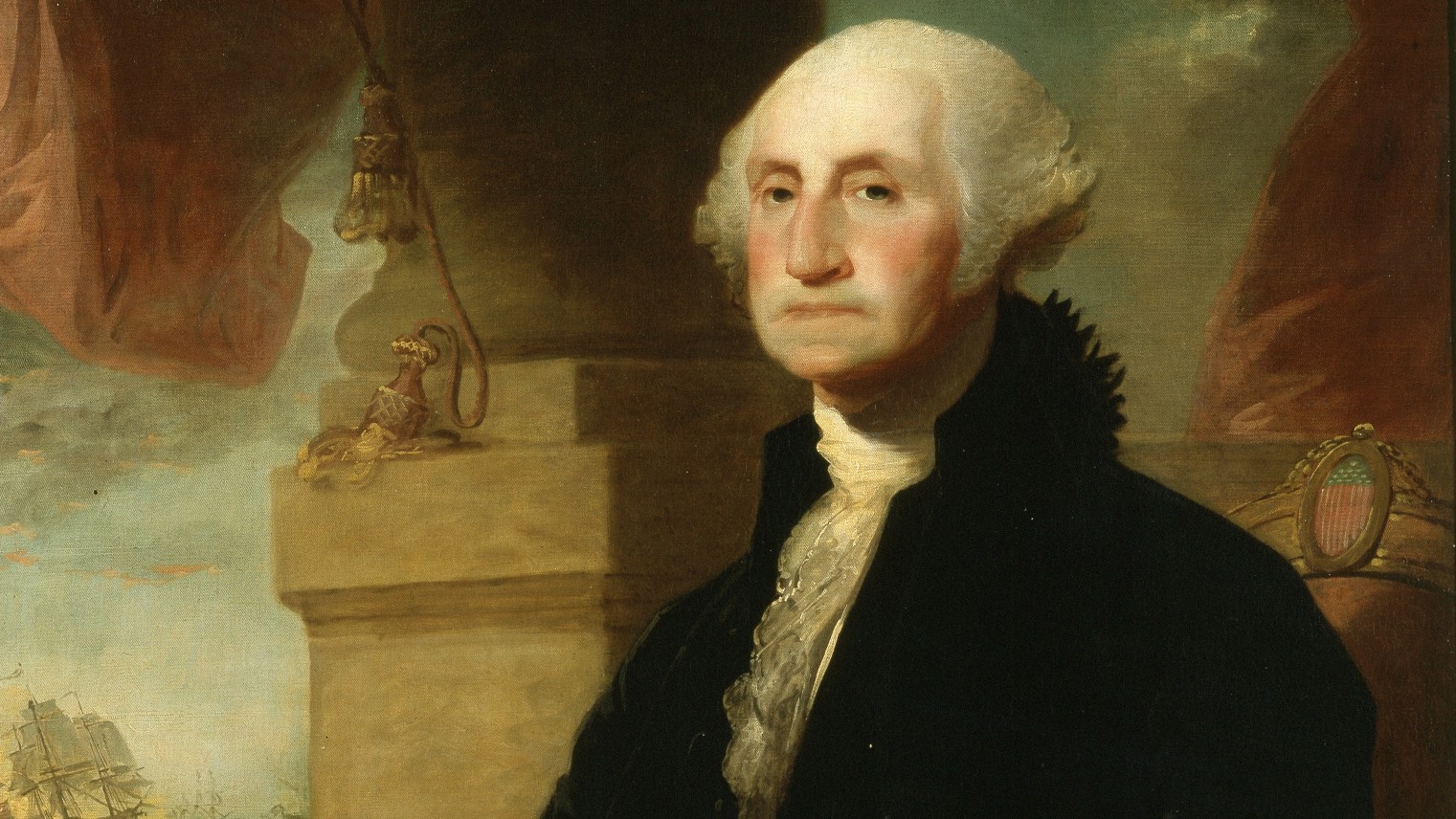George Washington: Commander, Founding Father and president
George Washington was a Revolutionary War general and the first president of the United States of America.

George Washington was an American military commander, statesman and one of the Founding Fathers of the United States of America. He was the commanding general of the Continental Army during the Revolutionary War (1775–1783) and helped the colonies win their independence from Great Britain. After the success of the war, he won the election to be appointed as the first president of the United States of America and was inaugurated on April 30, 1789.
Washington would ultimately serve two four-year terms as president, having been reelected in 1792. At the end of the second term Washington retired from political life, setting a precedent for future presidents of the United States.
Where was George Washington born?
Washington was born on Feb. 22, 1732, at Pope’s Creek, his family’s plantation in Westmoreland County, Virginia. Most of his early years were spent at Ferry Farm, near Fredericksburg, to which the Washington family moved in 1738, according to Smithsonian Magazine. Although we know little of Washington's childhood, colorful stories fill in some of the gaps, none more so than the famous ‘cherry tree’ moral tale, which supposedly demonstrates what an honest boy he was.
The tale, as outlined by the Washington Library, states that a young George Washington, aged six, received a hatchet as a gift and in using it damaged his father's cherry tree. When challenged, Washington is claimed to have said, "I cannot tell a lie… I did cut it with my hatchet," after which he was praised for his honesty in the face of punishment.
The story was dismissed as a, "complete fabrication" by Pulitzer Prize-winning historian and Washington biographer Joseph J Ellis in "His Excellency: George Washington," (Vintage, 2005), but it remains a popular fable of the general’s early life. What is known is that Washington was given a limited education, focusing on his chosen career as a surveyor, and Ellis relates that his first job was on a surveying expedition to the Shenandoah Valley in 1748.
Washington's military experience
Washington received extensive experience during the French and Indian War of 1754–63, which Ellis describes as a, "crash course in the art of soldiering." Most notably, he served under the British general Edward Braddock and witnessed a disastrous defeat at the Battle of the Monongahela in 1755. He then served as an officer of militia and was praised for his effective leadership. He attempted to have his regiment taken into the regular British Army, but was unsuccessful.
Washington developed into an effective commander but he had to learn on the job, having received no formal military training. He made mistakes early in the Revolutionary War. Ellis claims that his decision to stay on Manhattan after the British had taken Long Island in 1776 was, "militarily inexplicable and tactically suicidal,", but he kept his small army intact.
Get the world’s most fascinating discoveries delivered straight to your inbox.
For years he was unable to secure the large-scale decisive victory he yearned for, suffering defeats at Long Island (1776) and on the Brandywine outside Philadelphia (1777), but his occasional small-scale successes (notably at the Battle of Harlem Heights in 1776) kept morale at an acceptable level in his army. Perhaps his finest hour was at Trenton, at the end of the 1776 campaign, when he secured an important victory against an isolated outpost of Hessian soldiers (German troops hired by the British). He is most remembered, though, for masterminding the capture of an entire British army at Yorktown in 1781, finally delivering his large-scale victory.
Tragically his younger sister Mildred died two years later, and his father Augustine Washington, died in 1743, when George was aged 11.
According to Ellis, Washington began courting the wealthy widow Martha Dandridge Custis in 1758. Martha had inherited an estate worth £30,000 (£5.7/$7.5 million with inflation according to the Bank of England) and covering 18,000 acres. Ellis believes Washington most likely proposed to Martha in June of that year, but also believes that Washington was actually in love with another woman (Sally Fairfax, the wife of his best friend) at the same time. Nevertheless, Washington and Martha were married on Jan. 6, 1759.
Washington is believed to have been made sterile by a bout of Smallpox, and Martha also had a difficult time giving birth to her daughter, Patsy, from her previous marriage and may have been unable to bear more children. Whatever the reason, the couple did not have children of their own, although they raised Patsy and her older brother, John, known as Jacky by the family, together. Ellis asserts that Washington was especially eager for John to have the kind of education he had missed out on as a young man.
Both of Martha’s children died relatively young: Patsy from a seizure in 1773, aged just 17, and John of a fever in 1781, aged 26. John died following the siege of Yorktown, where he served as an aide to his stepfather — his two youngest children (of seven), Eleanor and George, were then raised by the Washingtons.
Washington Crossing the Delaware

The Crossing of the Delaware was part of Washington's success at the Battle of Trenton and has gone down in history as one of his most iconic moments. Washington actually crossed the Delaware River on several occasions, most famously on Christmas night 1776. After leading 2,400 men over the river (which was made treacherous by floating ice), he launched a surprise attack on Trenton, capturing almost the entire garrison of more than 1,000 men.
Related: Why the British were doomed in the American Revolutionary War
The attack was a gamble. In fact, Ellis describes it as, "an all-or-nothing wager," but with the help of a little luck, the gamble paid off. Three days later, on December 29, Washington crossed the river again and won another victory, this time against British troops led by Lord Cornwallis.
Washington as president
Washington served two terms as President, being elected unanimously (the only President who can make that claim) in 1789 by the Electoral College. Four years later he was persuaded to serve a second term, despite wanting to get back to his private life at Mount Vernon. His second term (starting in 1793) coincided with the French Revolution, and Washington’s insistence that America not get involved in European squabbles set the tone for American foreign policy for more than a century.
It was his intention to, "keep himself and his presidency hovering above the political fray," wrote Ellis. "He possessed a nearly preternatural ability to remain silent while everyone around him was squirming under the social pressure to fill the silence with chatty conversation." This was something that his vice president, John Adams, described as his greatest political asset.
Washington's death
Washington died on Dec. 14, 1799, and was buried in the family tomb at Mount Vernon three days later. The cause of death appears to have been a fever, exacerbated by getting caught in a sudden downpour while out riding.
Refusing to change out of his wet clothes, because it would have made him late for dinner, he fell ill that night. Medical remedies of the day extended to little more than bloodletting and enemas, which no doubt did nothing to help the former president, and he died within two days.
Washington and slavery
As plantation owners in the American South, the Washington family relied on slave labor to produce their crops. This continued when George owned his own estate at Mount Vernon. He owned around 500 slaves during his lifetime, but his thinking on the subject did evolve through his life.
Ellis asserts that, "he was deeply suspicious of any idealistic agenda that floated above the realities of power on the ground," and as president he was against an emancipation scheme. He did, however, increasingly question the legitimacy of the institution and although he never went so far as to campaign for abolition, his will did free the 123 slaves he owned at the time of his death. He also insisted that any that had grown old or suffered from any kind of disability should be looked after by his estate, while the younger slaves should be given an education and cared for until they were 25.
Additional resources
If you want to learn more about the life of George Washington, then you may enjoy learning whether or not he really had wooden teeth.
For more about the ideas that helped to give birth to the American Revolution you should also read about the Enlightenment.
Bibliography
- "The Oxford Companion to American Military History" edited by John Whiteclay Chambers II (Oxford University Press, 2000)
- "George Washington's Generals and Opponents: Their Exploits and Leadership" edited by George Athan Billias (Da Capo Press, 1994)
- "His Excellency: George Washington" by Joseph J. Ellis (Vintage, 2005)
- "Washington’s Crossing" by David Hackett Fischer (Oxford University Press, 2004)
- Mount Vernon
- "The Writings of George Washington, 14 vols." by George Washington, edited by Worthington Chauncey Ford (Online Library of Liberty)
David is a freelance writer and visiting lecturer at the University of Chester in the U.K.. He has a PhD in history, an MA in military history from the University of Liverpool and a BA in American studies from the University of Iowa. He has published several books on American history including "The First Anglo-Sikh War 1845-46" (Osprey Publishing, 2019) and "William Howe and the American War of Independence" (Bloomsbury, 2015).



